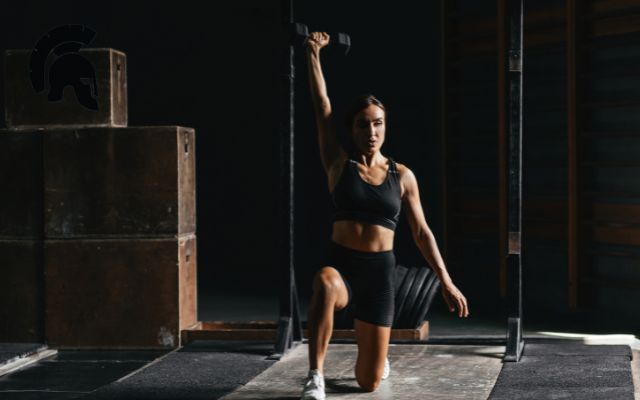You’re feeling the burn, the sweat, and the drive to push yourself further. But amidst the CrossFit fire, many face concerns: how to tailor workouts to their specific fitness level, navigating the potential for injury, and staying motivated throughout the journey. This article is your personalized guide, equipping you with a structured approach to daily CrossFit workouts. I’ll address your concerns, helping you achieve your fitness goals safely and effectively.
CrossFit Challenge
Are you striving for weight loss, building muscle mass, or simply enhancing overall health and fitness? Defining your objectives will shape your CrossFit journey. Equally crucial is honestly assessing your current fitness level. This involves acknowledging your experience level and limitations. Realistic expectations are key; CrossFit is a demanding discipline, so avoiding overexertion is vital for long-term success and injury prevention.
Acknowledge your strengths and weaknesses. It’s essential to know where you stand before taking on new challenges. If you’re a beginner, focus on proper form and building a foundation. Intermediate or advanced athletes should gradually increase the intensity and challenge.
Don’t aim for perfection right away. Start small, and progressively build your strength and endurance. Success in CrossFit is a marathon, not a sprint. Set realistic goals and celebrate your progress along the way.
Creating a Daily CrossFit Routine
A structured routine is your secret weapon in the CrossFit battlefield. Begin each session with a comprehensive warm-up designed to prepare your muscles for the demands ahead. Include dynamic stretches focusing on major muscle groups and movement patterns. This prepares your body for the challenges ahead. Following your workout, a cool-down phase is crucial for injury prevention and optimal recovery, involving static stretches to lengthen and relax your muscles.
Begin with lighter exercises, gradually progressing to heavier or more complex movements. You’ll want to arrange exercises strategically, potentially clustering similar muscle-group movements together for efficiency and maximizing recovery between sets. If you’re targeting a specific muscle group, perform exercises targeting that group together.
Progressive overload is the cornerstone of growth in CrossFit. This means consistently increasing the demands placed on your body over time. Gradually increase the weight, reps, or sets to challenge your limits and achieve improvements in strength and fitness. You might increase the weight, sets, or reps over time or even incorporate new exercises.
Weekly CrossFit Workout Plan
Monday
- Strength: Back Squat
- 5 sets of 5 reps at increasing weights
- WOD (Workout of the Day):
- AMRAP (As Many Rounds As Possible) in 12 minutes:
- 10 Push-Ups
- 15 Air Squats
- 20 Sit-Ups
- AMRAP (As Many Rounds As Possible) in 12 minutes:
Tuesday
- Strength: Clean and Jerk
- 5 sets of 3 reps
- WOD:
- For Time:
- 400m Run
- 21 Kettlebell Swings (1.5/1 pood)
- 12 Pull-Ups
- Repeat for a total of 3 rounds
- For Time:
Wednesday
- Warm-Up: Dynamic stretches and mobility work
- WOD:
- 5 Rounds for Time:
- 10 Burpees
- 15 Box Jumps (24/20 inches)
- 20 Double Unders (or single jumps)
- 5 Rounds for Time:
Thursday
- Light cardio (walking, cycling) or yoga/stretching session.
Friday
- Strength: Deadlift
- Work up to a heavy single, then drop to about 70% for 3 sets of 5 reps.
- WOD:
- Chipper for Time:
- 50 Wall Balls (20/14 lbs)
- 40 Walking Lunges
- 30 Toes-to-Bar
- 20 Dumbbell Thrusters (50/35 lbs)
- 10 Muscle-Ups (or scaled option)
- Chipper for Time:
Saturday
- Warm-Up: Rowing or running for 5-10 minutes
- WOD:
- For Time:
- Row 1000m
- 50 Russian Kettlebell Swings
- AMRAP in remaining time of:
- Plank Holds (30 seconds)
- Mountain Climbers (30 seconds)
- For Time:
Sunday
Focus on foam rolling, stretching, and mobility work. Consider a light jog or swim to promote recovery.
Daily Crossfit Workouts Programs for Beginners
This program below is clear and easy to follow.
Safety First: Injury Prevention in Daily CrossFit
Essential Warm-up and Cool-down Routines
A robust warm-up is essential for injury prevention. Dynamic stretches that mimic the movements of the upcoming workout—like arm circles, leg swings, and torso twists—prepare your muscles for the demands of the WOD. A warm-up also increases blood flow to the muscles, preparing them for exertion. These dynamic movements help improve flexibility and range of motion, reducing the risk of injury.
Cool-down exercises are equally important. Static stretches, holding each stretch for 15-30 seconds, promote recovery and reduce muscle soreness. They increase flexibility and help improve range of motion, minimizing the risk of stiffness and soreness. After intense workouts, take a few minutes to perform static stretches to prevent delayed-onset muscle soreness (DOMS).
Scaling for All Fitness Levels
CrossFit caters to all fitness levels. Beginner-friendly modifications adapt exercises for safety and effectiveness, ensuring that everyone can participate. For instance, you could use lighter weights or resistance bands for exercises like squats or deadlifts to make them manageable for beginners. Beginners should focus on building a solid foundation of form.
Adjusting exercises for advanced CrossFitters involves increasing the weight, reps, or sets to continually challenge the body. For example, during a workout focused on squats, a more advanced CrossFitter could increase the weight to increase the resistance.
Spotting and coaching are crucial to safety. Ensure that you’re working with a coach who can provide guidance and support, ensuring proper form and minimizing the risk of injury. Have a supportive partner to assist with exercises that require spotting, such as Olympic lifts. This adds a layer of safety and support, ensuring your movements are correct and safe.
Fitness Level and Progression
Progression Plans
Designing a custom routine involves several steps. First, consider your current fitness level. Second, identify your specific fitness goals, whether weight loss, muscle gain, or general fitness improvement. Then, create a workout plan that aligns with your goals and fitness level. A custom routine provides a personalized approach to fitness, adapting to your unique needs.
Progress is measured by improvements in metrics such as strength, endurance, and time. Keeping track of your improvements—whether in weight lifted, repetitions completed, or time taken to complete a workout—creates a sense of achievement, helping you stay motivated and see your progress.
Tracking your progress is essential to maintaining motivation and recognizing achievements. Tracking your personal bests (PBs) allows you to monitor your strength and endurance improvements. Use a journal or a dedicated fitness app to track your progress.
Avoiding Overtraining
Overtraining is a potential pitfall in CrossFit, leading to injury and burnout. Recognizing the signs of overtraining, such as persistent fatigue, decreased performance, and increased soreness, is essential. Pay attention to your body’s signals and avoid pushing through fatigue.
Recovery strategies are crucial for preventing overtraining. Listen to your body’s signals. Get adequate rest to allow your muscles to recover and rebuild. Incorporate active recovery, such as light cardio or stretching, into your routine to aid in the healing process. Implement adequate sleep, as this is when your body repairs itself.
Prioritizing adequate sleep is an integral part of this recovery process. Your body repairs and rebuilds itself during sleep, making it a crucial component of avoiding overtraining.
CrossFit Equipments You May Need
CrossFit requires various equipment. Barbells, kettlebells, jump ropes, and resistance bands are essential. Consider purchasing these tools to support your fitness journey. You can find these tools at various athletic supply stores or online retailers.
Locating a suitable CrossFit facility in your area is crucial to your success. Consider factors like the experience level of the instructors, equipment availability, and the community atmosphere. Check for reviews and ratings from other CrossFit participants to ensure the gym matches your needs.
Staying within a budget is crucial to your fitness journey. Evaluate the costs involved in CrossFit. Find a balance between your budget and your fitness goals. Look into various fitness options, including group classes, to explore affordability and get the value you need.
Specific Workout Concerns
Tailoring workouts for diverse body types and fitness limitations is key to inclusivity. Modifying movements for certain limitations and limitations will make CrossFit safer for everyone. For example, if you have knee pain, you could use lighter weights or perform squats with modifications to prevent pain and keep workouts safe. Listen to your body, and if you feel discomfort, seek guidance from a certified fitness professional.
Addressing issues with exercise performance will ensure that you’re performing each exercise with the correct technique to maximize efficiency and reduce the risk of injury. Adjusting your technique to ensure that you’re exercising properly and achieving the most out of your workout will yield the best results.
Alternative exercises can provide safe substitutions for injuries or limitations. For example, if you have a shoulder injury, alternative exercises like dumbbell rows can help keep workouts effective while keeping you safe.








